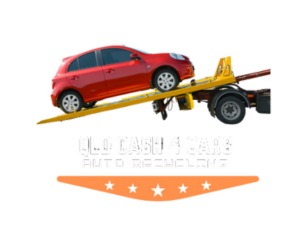
If you’ve decided to sell your unwanted car, you might be wondering what happens next. Rather than ending up in a landfill, in QLD Cash 4 Cars most vehicles go through a thorough recycling process that helps conserve resources and minimize environmental impact. Recycling an old car is not only good for the environment but also ensures that valuable materials are reused.
In this blog post, we’ll explore the 3-step process of recycling your unwanted car, giving you a behind-the-scenes look at how your vehicle is repurposed after it’s sold.
1. Vehicle Depollution and Fluid Removal
he first step in the car recycling process is depollution. When a vehicle arrives at the recycling facility, the car is inspected, and any hazardous fluids and materials are safely removed. This is a crucial step in ensuring that harmful substances don’t leak into the environment during the recycling process.
Key fluids that are drained include:
- Oil and fuel: Engine oil, transmission fluid, and any remaining fuel are extracted and either properly disposed of or recycled.
- Coolants: Antifreeze and coolant fluids are removed to prevent environmental contamination.
- Brake and steering fluids: These are safely drained and recycled where possible.
- Air conditioning refrigerants: Special care is taken to remove refrigerants to prevent the release of harmful greenhouse gases.
Once these hazardous materials are extracted, the vehicle is considered safe for the next stages of the recycling process.

2. Dismantling and Salvaging Usable Parts
After your unwanted car has been depolluted, the next step is dismantling. In this phase, the vehicle is carefully taken apart, and any usable components are salvaged. Even if a car is no longer roadworthy, many of its parts can still be reused in other vehicles or sold as spare parts.
Key components that are typically salvaged include:
- Engine and transmission: If these parts are still in good condition, they can be refurbished and sold for use in other vehicles.
- Battery: Car batteries are highly recyclable and often reused or properly disposed of to prevent environmental harm.
- Tires: Usable tires are resold, while worn-out tires are recycled into new products, such as rubber mulch or asphalt.
- Doors, windows, and mirrors: These parts may be removed and resold to mechanics or auto enthusiasts looking for specific replacements.
By salvaging these parts, the recycling process ensures that nothing of value goes to waste, reducing the need for new parts manufacturing and conserving resources.


3. Shredding and Recycling Metal
The final step in the car recycling process is shredding. Once all usable parts have been removed, what’s left of the vehicle, primarily the metal frame, is sent through a shredder. This powerful machine breaks the car down into small pieces of metal, glass, and plastic.
Once the vehicle is shredded, the materials are separated for further recycling:
- Steel and aluminum: The majority of a car’s weight comes from metal, which is highly recyclable. Steel and aluminum are separated using powerful magnets and other techniques. These metals are then melted down and reused in new products, such as construction materials and even new cars.
- Glass: Automotive glass is also recyclable and is processed to be reused in items like fiberglass insulation or even new windows.
- Plastic: Car bumpers, dashboards, and other plastic components are separated and recycled into new plastic products, reducing the need for virgin plastic production.
This shredding and recycling process allows for up to 80-90% of the vehicle to be repurposed, making car recycling an essential part of the sustainability chain.
Why Car Recycling Matters
Recycling unwanted cars is important for several reasons:
- Conservation of resources: By recycling steel, aluminum, glass, and plastic, we reduce the demand for new raw materials. This helps preserve natural resources and reduces the environmental impact of mining and manufacturing.
- Energy savings: Recycling materials like steel and aluminum uses significantly less energy than producing them from scratch, helping to reduce carbon emissions.
- Environmental protection: Properly disposing of hazardous materials like oils, fluids, and refrigerants prevents soil and water contamination, protecting ecosystems and communities.
- Economic benefits: Car recycling creates jobs and contributes to the economy by providing affordable spare parts and raw materials.
The Responsible Way to Sell Your Unwanted Car With Top Cash
When you sell your unwanted car, you’re not only getting rid of an unused vehicle—you’re also contributing to an eco-friendly recycling process that helps protect the environment and conserve resources. The 3-step process of car recycling—depollution, dismantling, and shredding—ensures that the maximum amount of your car is reused or repurposed.
If you’re looking to sell your car and want to ensure that it’s disposed of responsibly, consider using a QLD Cash for Cars. Not only will you get paid top cash for your unwanted vehicle, but you’ll also have peace of mind knowing that your car is being recycled in a sustainable and environmentally friendly way.
Ready to recycle your car? contact QLD Cash For Cars removal service or fill the below form today and turn your old vehicle into instant cash while contributing to a greener future!
